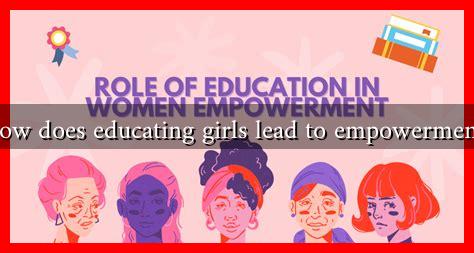-
Table of Contents
How Does Educating Girls Lead to Empowerment?
Education is a fundamental human right and a powerful tool for social change. Among the most significant impacts of education is its role in empowering girls. When girls are educated, they gain the knowledge, skills, and confidence necessary to participate fully in society. This article explores the multifaceted ways in which educating girls leads to empowerment, supported by statistics, case studies, and real-world examples.
The Link Between Education and Empowerment
Empowerment is a broad concept that encompasses various dimensions, including economic, social, and political aspects. Educating girls contributes to empowerment in several key ways:
- Economic Independence: Education equips girls with skills that enhance their employability and earning potential.
- Health Awareness: Educated girls are more likely to make informed health choices, leading to better health outcomes for themselves and their families.
- Social Participation: Education fosters critical thinking and confidence, enabling girls to engage in community and political activities.
- Breaking the Cycle of Poverty: Educated women are more likely to invest in their children’s education, creating a positive cycle of empowerment.
Statistics That Speak Volumes
The impact of educating girls is backed by compelling statistics. According to the World Bank, every additional year of schooling for girls can increase their future earnings by up to 20%. Furthermore, the United Nations Educational, Scientific and Cultural Organization (UNESCO) reports that if all girls completed secondary education, child marriage could be reduced by 14 million cases annually. These figures illustrate the profound economic and social benefits of investing in girls’ education.
Case Studies of Successful Initiatives
Several organizations and countries have implemented successful initiatives aimed at educating girls, leading to significant empowerment outcomes. Here are a few notable examples:
- The Malala Fund: Co-founded by Nobel laureate Malala Yousafzai, this organization advocates for girls’ education worldwide. Their efforts have led to increased enrollment rates in regions where girls face significant barriers to education.
- Bangladesh’s BRAC Program: BRAC, one of the largest NGOs in the world, has developed innovative educational programs that have successfully increased girls’ school attendance and retention rates in Bangladesh.
- Rwanda’s Gender Equality Policies: Following the 1994 genocide, Rwanda prioritized girls’ education as part of its recovery strategy. Today, Rwanda boasts one of the highest rates of female representation in government, largely attributed to increased educational opportunities for girls.
The Ripple Effect of Educating Girls
The empowerment of girls through education creates a ripple effect that benefits entire communities and societies. Educated women are more likely to:
- Participate in the workforce, contributing to economic growth.
- Advocate for their rights and the rights of others, fostering social justice.
- Promote health and well-being within their families, leading to lower infant mortality rates and improved family health.
- Encourage future generations to pursue education, perpetuating the cycle of empowerment.
Challenges and the Path Forward
Despite the clear benefits of educating girls, significant challenges remain. In many parts of the world, cultural norms, poverty, and inadequate infrastructure hinder girls’ access to education. To overcome these barriers, a multi-faceted approach is necessary:
- Investing in infrastructure, such as schools and transportation.
- Implementing policies that promote gender equality in education.
- Engaging communities to change cultural perceptions about girls’ education.
Organizations like UNICEF and Girls Not Brides are working tirelessly to address these challenges and promote girls’ education globally.
Conclusion
Educating girls is not just a moral imperative; it is a strategic investment in the future of societies. The empowerment that comes from education leads to economic independence, improved health, and active participation in civic life. As we continue to advocate for girls’ education, it is essential to recognize the profound impact it has on individuals and communities alike. By breaking down barriers and ensuring that every girl has access to quality education, we can create a more equitable and prosperous world for all.

